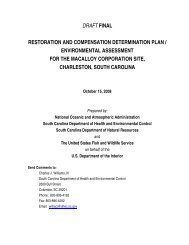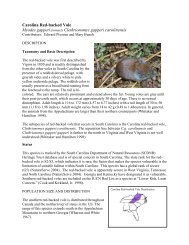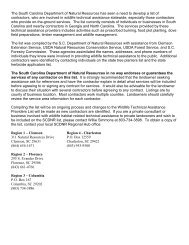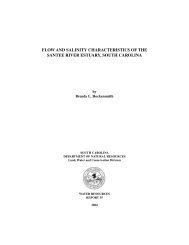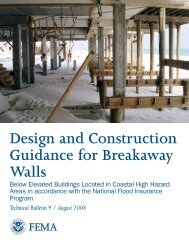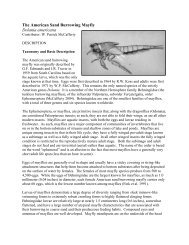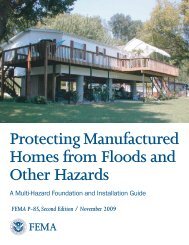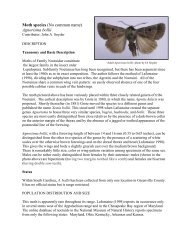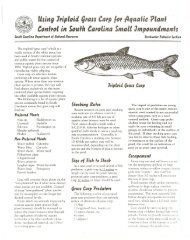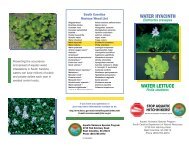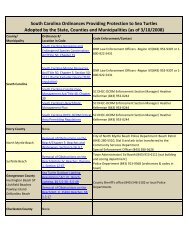Pond Management - South Carolina Department of Natural Resources
Pond Management - South Carolina Department of Natural Resources
Pond Management - South Carolina Department of Natural Resources
Create successful ePaper yourself
Turn your PDF publications into a flip-book with our unique Google optimized e-Paper software.
Appendix A: Glossary<br />
Acre-Foot: An acre <strong>of</strong> water a foot deep. It contains 43,560 cubic<br />
feet <strong>of</strong> water. To calculate acre-feet, multiply the number <strong>of</strong> surface<br />
acres by the average depth in feet.<br />
Alkalinity: The amount <strong>of</strong> bases (mostly carbonate and<br />
bicarbonate ions) in the water. Moderate to high alkalinity in<br />
a pond helps to prevent rapid pH changes and also insures an<br />
adequate supply <strong>of</strong> available carbon for phytoplankton growth.<br />
<strong>South</strong> <strong>Carolina</strong> ponds usually have low alkalinities.<br />
Aluminum Sulfate: A compound that causes suspended clay<br />
particles (turbidity) to coagulate and precipitate from the water<br />
column. It is also called filter alum.<br />
Balance: The ratio and weight <strong>of</strong> predatory fish (largemouth bass)<br />
to forage fish (bluegill/shellcracker) in the pond. A well-balanced fish<br />
pond will sustain the growth and reproduction <strong>of</strong> each species, over<br />
time, in the presence <strong>of</strong> angler harvest and natural mortality.<br />
Berm: A low dike or retaining well.<br />
Bloom: The green color produced in a pond when it has been<br />
fertilized. It is composed <strong>of</strong> millions <strong>of</strong> microscopic plants<br />
(phytoplankton) floating freely in the water, and provides the basis<br />
for the pond’s food web.<br />
Carrying Capacity: Refers to the maximum poundage <strong>of</strong> fish per<br />
acre a pond can support at a given time.<br />
Dissolved Oxygen (DO): Oxygen which is dissolved in water. It<br />
is the form <strong>of</strong> oxygen that fishes require for respiration.<br />
Hardness: The total amount <strong>of</strong> metal ions (mostly calcium and<br />
magnesium) dissolved in water. <strong>Pond</strong>s with a water hardness<br />
below 20 mg/l are difficult to fertilize economically. Hardness may<br />
be raised in a pond by liming. Alkalinity and hardness in <strong>South</strong><br />
<strong>Carolina</strong> ponds are usually near the same magnitude.<br />
Milligrams per liter (mg/l): Unit <strong>of</strong> measurement; the equivalent<br />
is one part per million. Example: To obtain a salt solution <strong>of</strong> 1 mg/l<br />
in one acre-foot (43,560 cubic feet or 325,830 gallons) <strong>of</strong> water,<br />
2.7 lbs. <strong>of</strong> salt would have to be added.<br />
Mortality: Death.<br />
30



